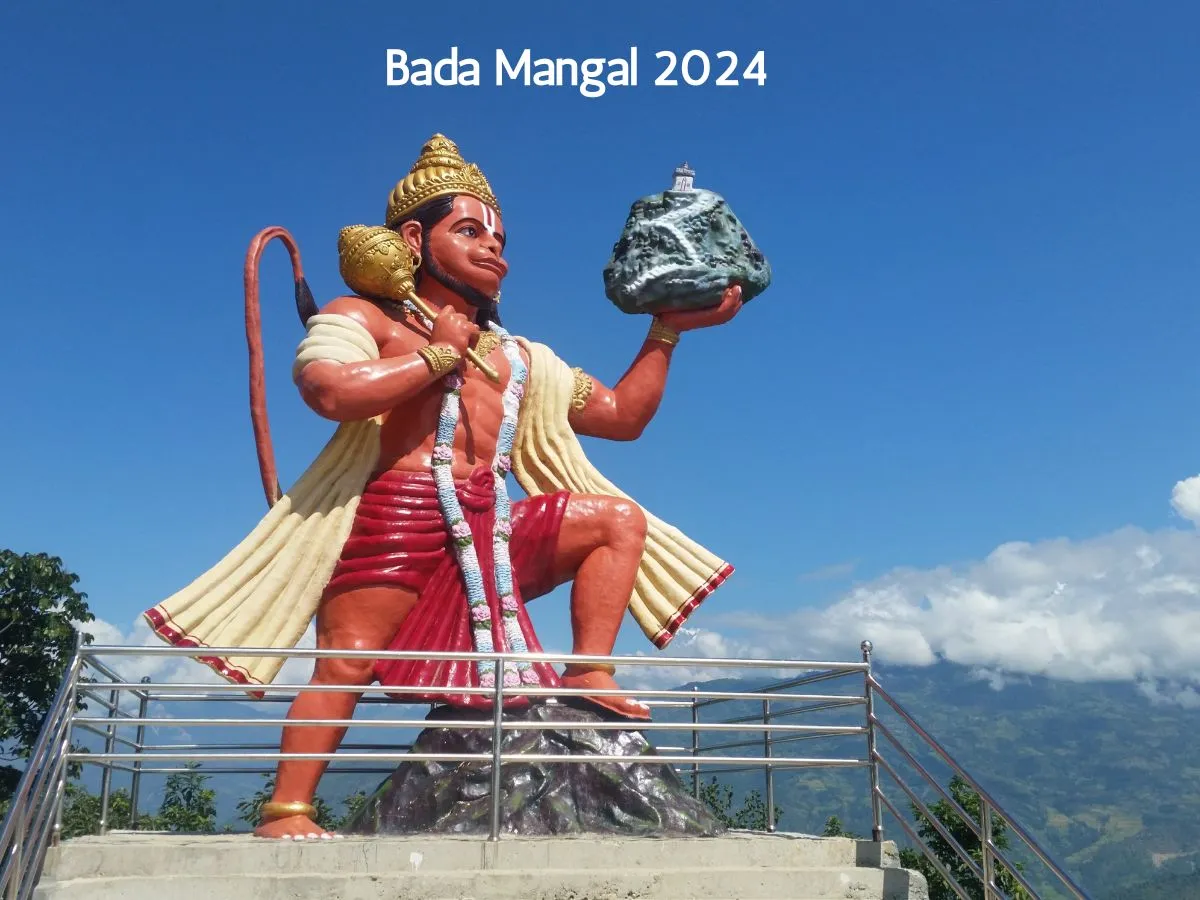Table of Contents
ToggleBada Mangal: Celebrating Devotion and Unity in Lucknow
Historical Context
Bada Mangal, a festival steeped in historical significance, offers a window into the syncretic culture of Lucknow. This year Bada Mangal Celebration will start on 28th May 2024 i.e. 1st Tuesday on hindi month JYESHTHA. The legend of Begum Jan, a Muslim noblewoman who initiated this Hindu festival, exemplifies the interfaith harmony that has long characterized the region. This story, passed down through generations, highlights how religious devotion and communal goodwill can transcend boundaries, fostering unity.
The Nawabs of Awadh, known for their patronage of arts and culture, also supported various religious festivities, including Bada Mangal. This support helped cement the festival’s place in the cultural fabric of Lucknow, ensuring its survival and growth over centuries.
Special Pujas and Aartis:
The day begins with Mangala Aarti, a pre-dawn ritual that invokes divine blessings. Throughout the day, continuous chanting of Hanuman Chalisa and Sundar Kand (a section of the Ramayana detailing Hanuman’s adventures) takes place. Evening aartis are grand affairs, drawing large crowds who come to witness the deity being bathed in a sea of lights and chants.
Community Bhandaras
The spirit of Bada Mangal is epitomized by the widespread organization of bhandaras. These community kitchens set up across Lucknow serve free meals to everyone, symbolizing the egalitarian and inclusive nature of the festival. The food served is typically vegetarian and includes traditional North Indian dishes.
Preparation and Distribution:
Volunteers, including families, local businesses, and social organizations, come together to prepare and distribute food. Large cauldrons bubble with aromatic curries, while heaps of puris are fried and served hot. The bhandaras also distribute sweets like halwa and boondi, adding to the festive cheer.

Special Pujas and Aartis:
The day begins with Mangala Aarti, a pre-dawn ritual that invokes divine blessings. Throughout the day, continuous chanting of Hanuman Chalisa and Sundar Kand (a section of the Ramayana detailing Hanuman’s adventures) takes place. Evening aartis are grand affairs, drawing large crowds who come to witness the deity being bathed in a sea of lights and chants.
Community Bhandaras
The spirit of Bada Mangal is epitomized by the widespread organization of bhandaras. These community kitchens set up across Lucknow serve free meals to everyone, symbolizing the egalitarian and inclusive nature of the festival. The food served is typically vegetarian and includes traditional North Indian dishes.
Preparation and Distribution:
Volunteers, including families, local businesses, and social organizations, come together to prepare and distribute food. Large cauldrons bubble with aromatic curries, while heaps of puris are fried and served hot. The bhandaras also distribute sweets like halwa and boondi, adding to the festive cheer.
Processions and Public Celebrations
Vibrant processions, known as Shobha Yatras, are a hallmark of Bada Mangal. These processions feature elaborately decorated floats carrying idols of Lord Hanuman, accompanied by devotees singing bhajans and chanting slogans like “Jai Hanuman” and “Bajrang Bali Ki Jai.”
Cultural Programs
Alongside the processions, various cultural events are organized. These include performances of Ramleela, narrating episodes from the Ramayana through dance and drama, and musical evenings dedicated to devotional songs. These programs are often held in community centers, parks, and temple courtyards, providing entertainment and spiritual enrichment.
Societal Impact and Inclusivity
Bada Mangal serves as a powerful reminder of the inclusive and communal spirit of Lucknow. It brings together people from different socio-economic backgrounds, fostering a sense of unity and shared purpose. The festival transcends religious boundaries, with individuals from various communities participating in the celebrations, thus promoting social harmony.
Impact on Local Economy
The festival also has a positive impact on the local economy. Small businesses, particularly those selling flowers, sweets, and other religious paraphernalia, see a significant boost in sales. Additionally, local artisans and performers find opportunities to showcase their talents, contributing to the cultural and economic vitality of the city.
Modern-Day Relevance
In contemporary times, Bada Mangal continues to thrive, adapting to modern sensibilities while retaining its traditional essence. The advent of social media has further amplified the festival’s reach, with devotees sharing live updates, photos, and videos of the celebrations, thereby engaging a global audience.
Environmental Initiatives
In recent years, there has been a conscious effort to make Bada Mangal celebrations more environmentally friendly. Initiatives such as using biodegradable plates and cups for bhandaras, promoting the use of eco-friendly decorations, and organizing cleanliness drives post-celebrations have been well-received.
Conclusion
Bada Mangal is more than just a religious festival; it is a celebration of Lucknow’s rich cultural heritage and its enduring spirit of community and inclusivity. The festival’s historical roots, combined with its vibrant and inclusive celebrations, make it a unique and cherished event in the city’s calendar.
As the city of Lucknow lights up with devotion and joy every Jyeshtha month, Bada Mangal stands as a testament to the power of faith, the importance of charity, and the strength of community bonds. It is a time when the city collectively celebrates its traditions, reinforces its cultural values, and looks forward to another year of prosperity and harmony under the blessings of Lord Hanuman.
